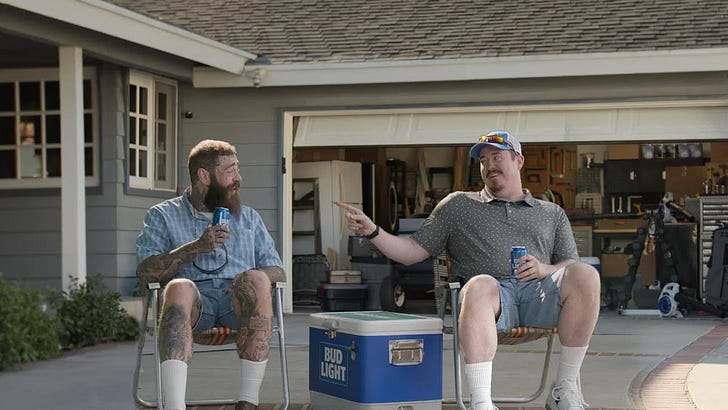Watching for repentance in the Big Game ads
Bud Light czars bow down, but will red-zip-code Americans pay attention?
It’s the Big Day, one of the high holy days of American mass media.
Will Taylor Swift get a ring or not? Actually, that hot-button topic isn’t what this post is about.
This post focusing on one of the most powerful forms of media in all of screen culture, but it’s the form of media that — even though the typical American is exposed to it 4,000 times or so a day — we rarely stop to think about. Frequently, we work hard to avoid thinking about it.
We’re talking about advertising, the omnipresent form of mass media that pays (not as much as it used to) for the other media content that surrounds us.
Remember when lots of people used to watch the Big Game just to watch, and even rank, those elaborate, super-expensive, celebrity-packed commercials? That trend has been undercut quite a bit in recent years by corporations releasing many of the ads early — online, of course — in an attempt to stir up media coverage and free buzz.
But still, the Big Game advertisements are a big deal.
It’s been that way forever. There are the hauntingly iconic ads of the past, such as director Ridley Scott’ masterpiece for Apple in 1984.
There are ads that want to be wink-wink iconic, such as the 1992 Pepsi ad with supermodel Cindy Crawford (the original, not the 2018 homage)
This year, expect much of the post-game debate to focus on whether humbled corporate-ad creators turned away from the “woke” mini-sermons (such as the Gillette ad attacking toxic masculinity) that win awards from their peers and returned to old-fashioned appeals built on stupid humor for the flyover-country masses.
In other words, people will be arguing about whether it is good for the planet, and all of the creatures that inhabit it, for advertisers to try to sell their products to knuckle-dragging Donald Trump voters. You may even see media criticism about the cultural significance of the spray of BBQ sauce from that bikini-model influencer’s free “hangover” burger in a Carl’s Jr. commercial.
But the key player in this 2025 drama will almost certainly be Bud Light, as the company’s leaders continue their repentance campaign after the Dylan Mulvany disaster. As it turns out, there are more suburban and rural guys in baseball caps who drink Bud Light than rail-thin trans urbanites.
Thus, I am interested in knowing if readers (as well as journalists looking for clicks) are interested in what the Super Bowl LIX ads say about the current state of America’s “culture wars” (a term that, in public discourse, has little or no connection with it’s original James Davison Hunter definition).
Keep reading with a 7-day free trial
Subscribe to Terry Mattingly -- Rational Sheep to keep reading this post and get 7 days of free access to the full post archives.




